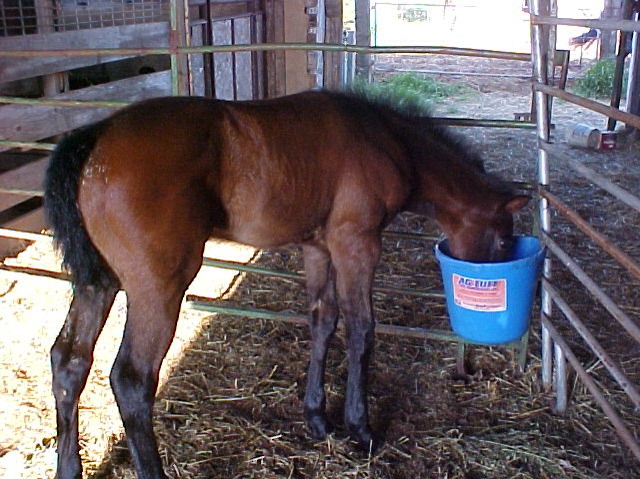Milk Replacer for Foals

A friend recently called, asking if I had bottles for foals. She explained that her mare had rejected her foal, and the said they were going to have to start feeding milk replacer.
I then asked my friend if she was aware how many times an hour a young foal can nurse, and there was a long silence on the phone.
So, I explained that a young foal can nurse up to 17 times an hour, and although this does decrease with age, it would take a village to manage the task. At 1 day of age the foals intake can be up to 10% of its body weight. This consumption will increase up to 25% from about 10 days of age until weaning, so bottle feeding is not a realistic solution.
With that in mind, giving the foal access to milk at all times is feeding in a more natural manner than a bottle fed meal. This will also allow the foal to drink as little or as much as he/she want, which will result in fewer digestive upsets.
The foal can learn to drink from a shallow bowl or bucket very quickly after birth, so I explained to my friend the steps to follow with her foal:
- First, place your finger in their mouths to stimulate the suckle reflex.
- While they are sucking, raise the small bowl containing the liquid milk replacer solution up to their muzzle.
- Always bring the milk up to the foal; do not force the foal’s head down into a bucket!
- After they start to suck and drink, slowly remove your finger from the foal’s mouth.
- If he stops drinking, repeat the above steps until he is drinking by himself.
- The first day, warm the liquid milk replacer to encourage consumption.
- When the foal drinks without assistance, hang a bucket with the milk replacer solution in it from the stable wall at the foals shoulder height. This will allow the foal to drink whenever it wants, just as if the mare was there.
- The bucket should be a contrasting color to the wall to make it easy for the foal to find.
From birth to about 4 months of age milk replacers are a great option for orphaned ro rejected foals, or foals needing supplementation.
I encourage any farm that is expecting a foal to have at least a 15-pound bucket of milk replacer on hand. It is well worth the investment!
